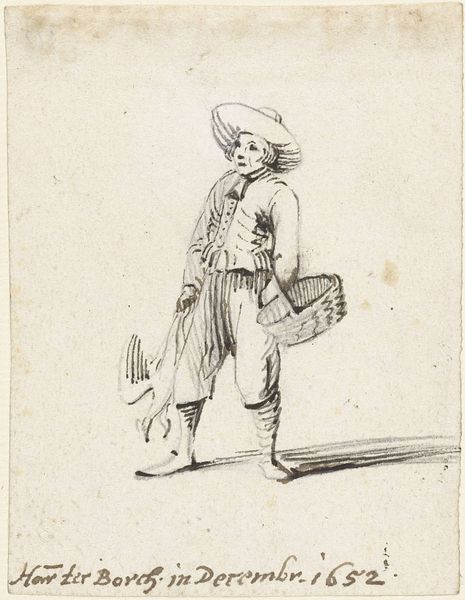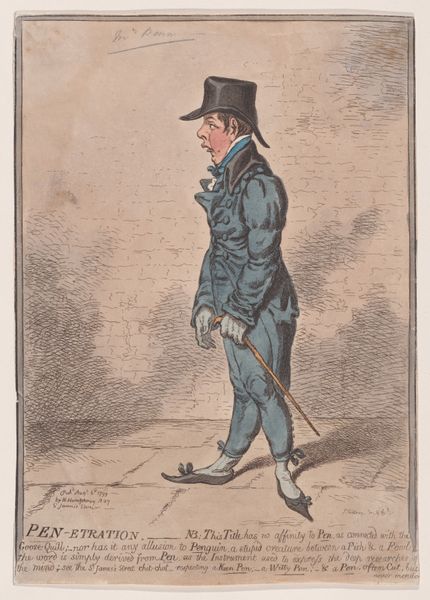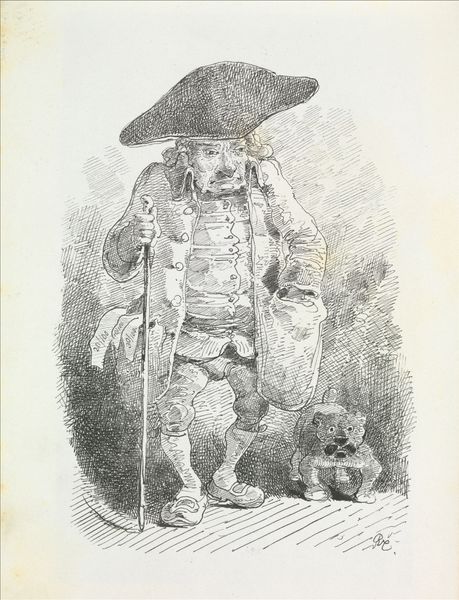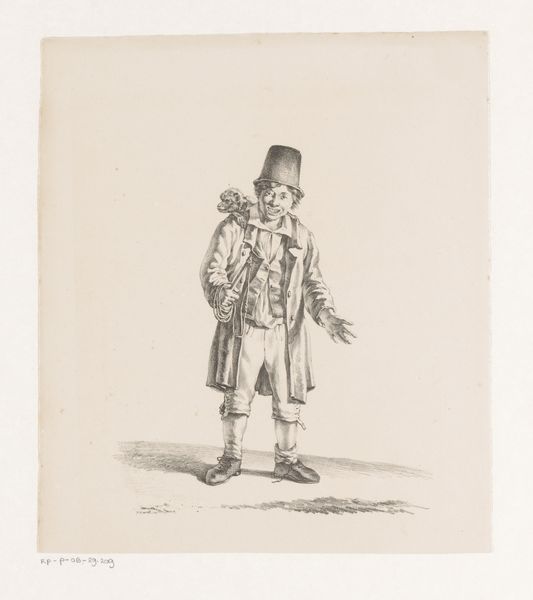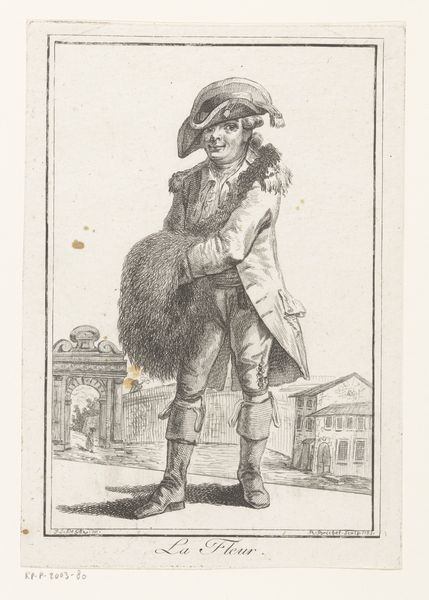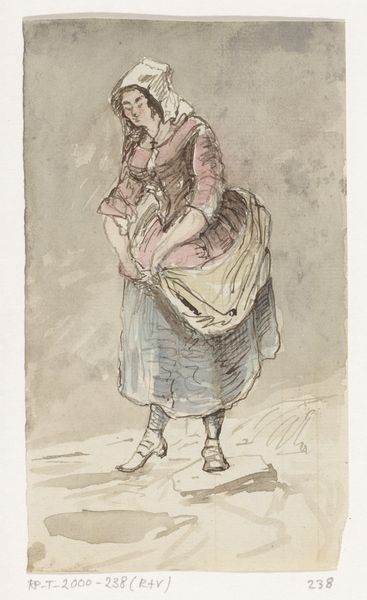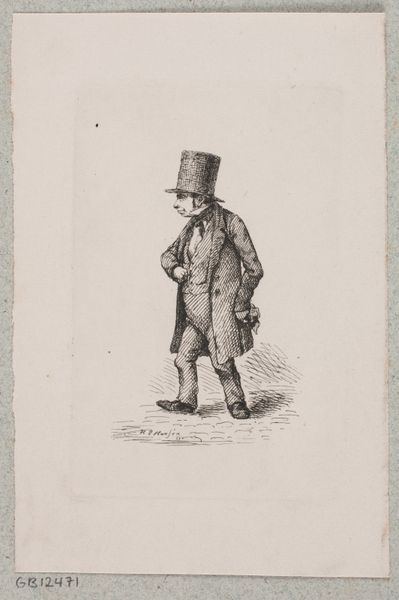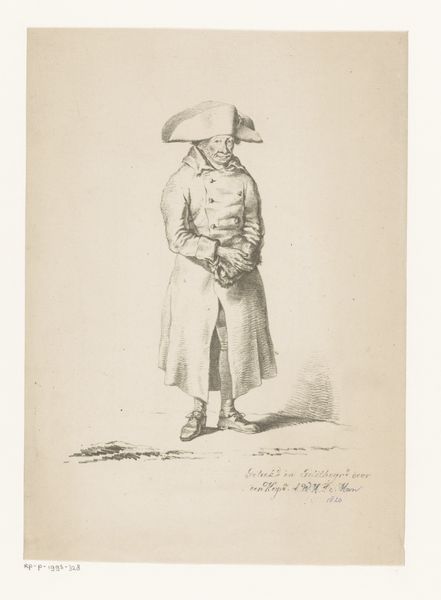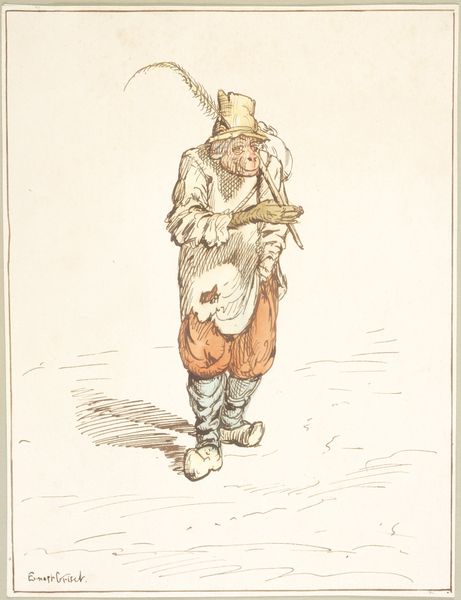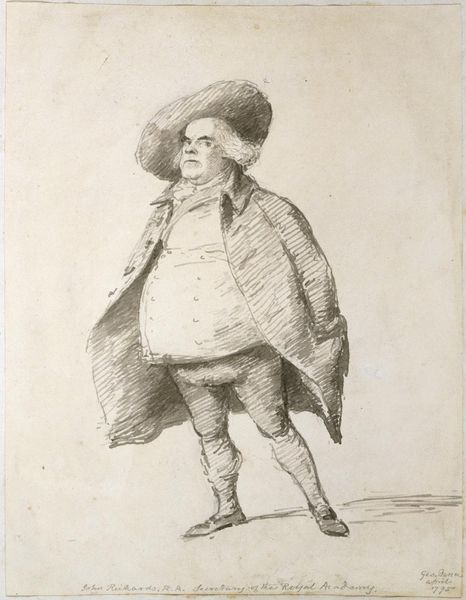
drawing, coloured-pencil, print, paper, ink, graphite
#
portrait
#
drawing
#
coloured-pencil
# print
#
caricature
#
pencil sketch
#
paper
#
ink
#
coloured pencil
#
folk-art
#
graphite
Dimensions: 111 × 88 mm
Copyright: Public Domain
Curator: Ah, yes. John Leech's "Paris 1856." A rather intriguing drawing rendered with graphite, ink, and coloured pencils on paper. Its satirical edge is hard to miss. Editor: Satirical is an understatement. I'm immediately struck by the blatant anthropomorphism—a bear dressed to the nines in what looks like aristocratic attire, smoking a cigarette! The whole thing is both absurd and strangely compelling. Curator: Precisely! Leech was a prominent social commentator, particularly during the Victorian era. Caricature was his weapon. This drawing, like much of his work, likely comments on the social or political climate of Paris in 1856, potentially satirizing the powerful. Editor: The choice of a bear is fascinating. Bears are often symbols of brute strength or untamed wilderness. Putting it in a waistcoat with what looks like an order pinned to it and a rather jaunty hat, smoking nonchalantly – it dismantles that expected narrative. Could it be a comment on power and its often-uncivilized underbelly? Curator: Absolutely, it resonates with observations by later theorists such as Gramsci on hegemony. Consider, too, that caricatures often targeted specific individuals, sometimes even nations, through animal symbols. It was a way to critique authority under the veil of humor. The context of 1856 Paris is vital. This followed the Crimean War. Was this a depiction of Russia maybe, or some alliance? The timing would be crucial. Editor: Interesting angle. It invites consideration of how nations projected power. I also see how it disrupts societal hierarchies by implying they are built on arbitrary constructs. Anyone, or anything, can wear the clothes of power; in fact, the bear looks entirely out of place in that outfit. I think this speaks to how effectively art uses humor to point to profound social and political critiques. Curator: I agree wholeheartedly. Leech understood the power of visual communication. His satirical lens allows us a glimpse into Victorian society's perceptions and anxieties around class, power, and international politics. His skills lay not only in art but shrewd social observation. Editor: Ultimately, Leech's piece makes us question the figures and emblems that shape the way societies are structured. What initially strikes one as a humorous sketch soon unfolds to highlight some persistent concerns related to representation, power, and cultural critique.
Comments
No comments
Be the first to comment and join the conversation on the ultimate creative platform.

